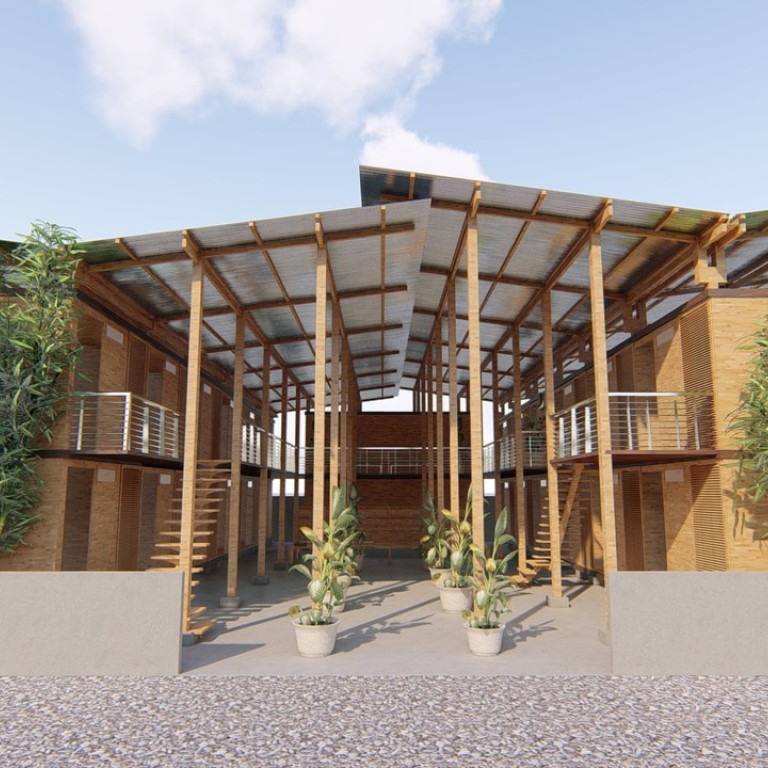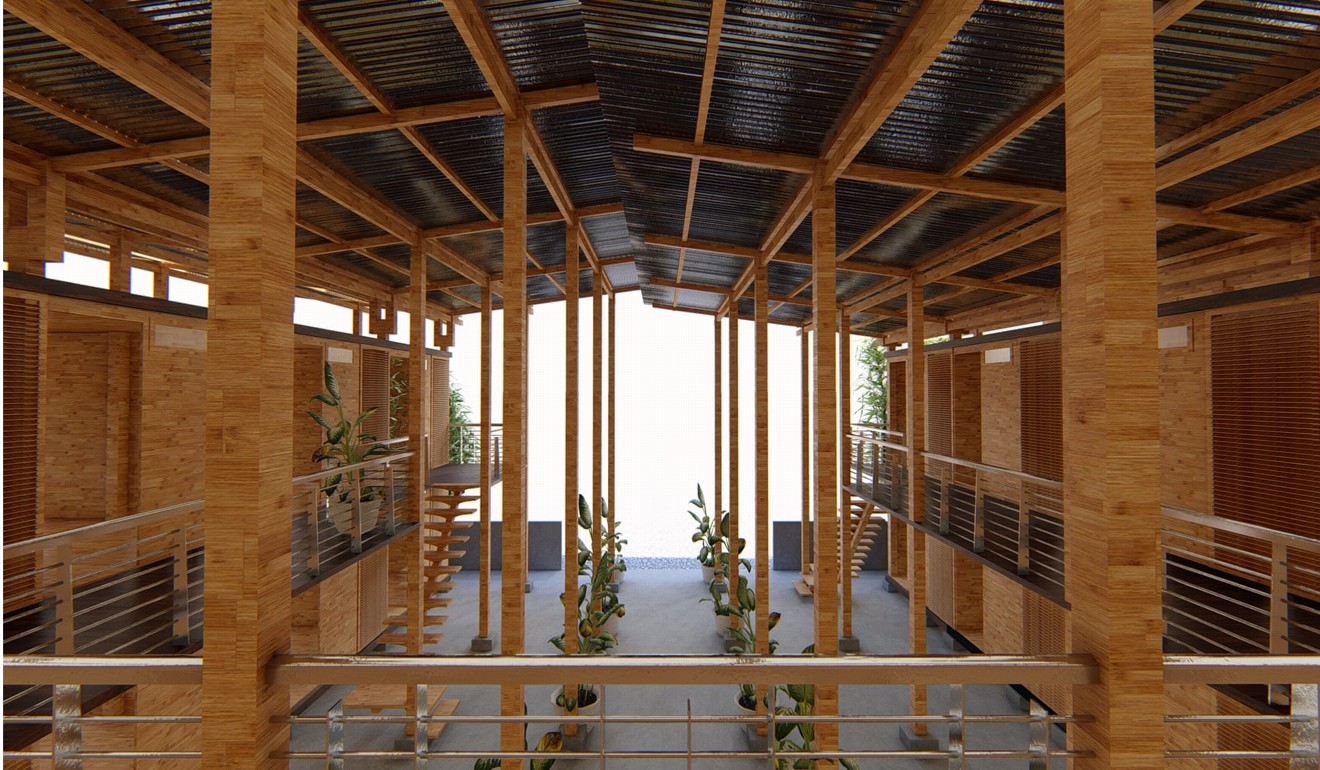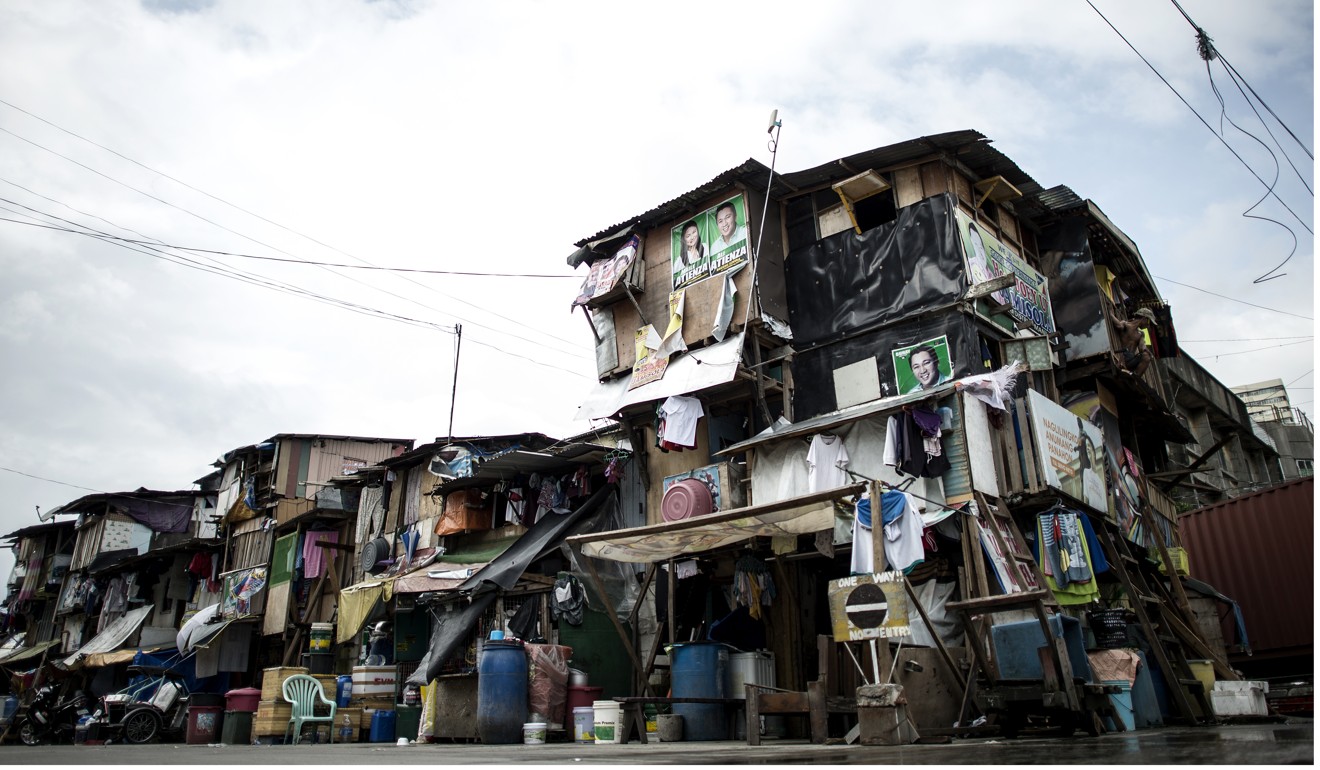
Fixing Asia’s slums: bamboo house that takes four hours to build wins future cities contest
- Earl Forlales from the Philippines took inspiration from his grandparents’ bamboo hut
- ‘Cubo’ is low-cost, sustainable and easy to construct
The creator of a house made of bamboo that can be put together in four hours has won a £50,000 (US$64,000) top prize to develop cities for the future.
Earl Forlales, 23, a graduate in material science engineering, came up with the design to help solve the chronic shortage of affordable accommodation in the Philippines. He took inspiration from the bamboo hut his grandparents lived in outside Manila.
Inhabitants of this India slum live and die in a ‘plastic hell’
Forlales was awarded first prize by Britain’s Royal Institution of Chartered Surveyors (RICS) for his use of low-cost, sustainable material, and the speed at which his house – known as Cubo – could be constructed.
“The world’s cities are growing all the time and there is a real need to make sure they are safe, clean and comfortable places to live for future generations,” said John Hughes, the competition head judge and president of the institute.
“There were many exciting, original designs among the submissions. However, Earl’s idea stood out for its simple, yet well-thought-through, solution to the world’s growing slum problem. As we look at our entrants, who are our next generation of leaders, I believe that real progress will be made in tackling the world’s biggest issues.”



Forlales’ house could be manufactured in a week, constructed in four hours and costs £60 per square metre. Its use of bamboo – which releases 35 per cent more oxygen into the environment than trees – was praised by the judges. The ability of the houses to be constructed in any bamboo-producing area was one of the key attractions.
Forlales has already identified a suitable area of land to start building his Cubo houses. He plans to begin work next year with experts from RICS in an attempt to help relieve the huge pressures on housing in Manila, where a third of the 12.8 million population live in slums.
“This is a huge step forward to helping the people of Manila,” Forlales said. “The state of housing in the city is at crisis point, and will undoubtedly get worse with this new influx of workers.
“Cubo started as nothing more than an idea, conceived while spending time at my grandparent’s house – it is incredible to think that it now will become a reality.
“I would like to thank [the institute] for the opportunity to develop the idea, and look forward to working with them to put this money to good use in Manila, and then hopefully elsewhere around the world.”


The Cities for our Future competition launched in January this year with the aim of finding practical solutions to problems that the world’s cities face. There were more than 1,200 entries, which were narrowed down to 12 finalists. Each finalist was given a mentor from RICS to help them develop their idea over several months. The final judging took place this month.
Dr Beth Taylor, chair of Britain’s National Commission for Unesco, was a competition judge. She praised Forlales for his forward thinking.
“One of the reasons Earl’s entry stood out from the other finalists was through its use of traditional, sustainable technologies and materials, to solve an issue facing modern cities across the world,” she said.

